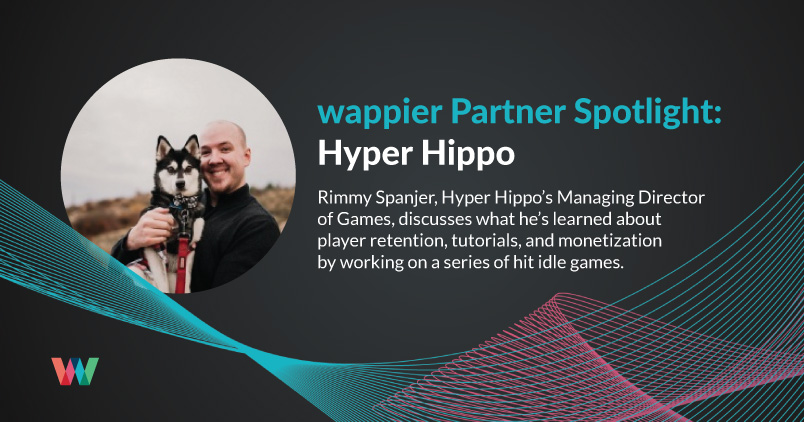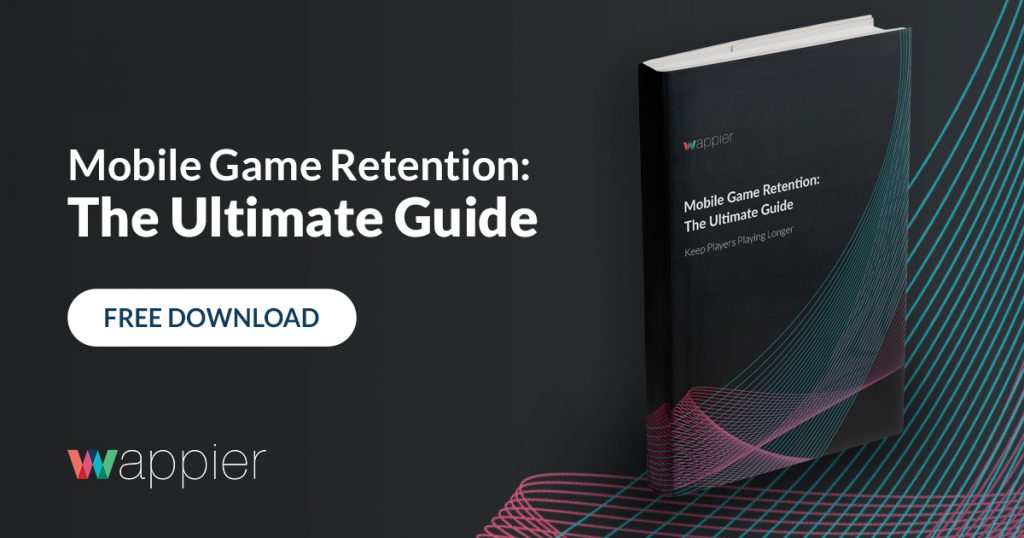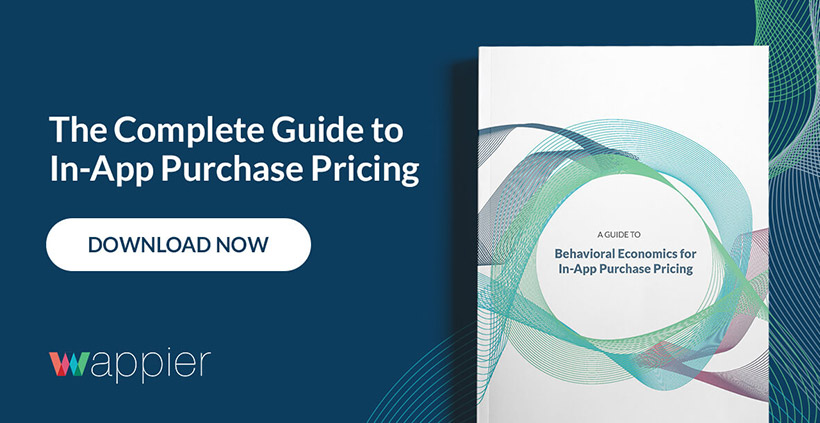Rimmy Spanjer, Managing Director of Games at Hyper Hippo breaks down the many challenges involved in making it fun to click a button.
Take a quick scan of the App Store or Google Play and you’ll find a bevy of idle games fighting for dominance. The genre’s popularity isn’t hard to understand: players literally can’t lose, they just have to sit back and let the game do the work for them. Peek under the hood of an addictive idle game and you’ll find a delicate balance of emotional appeal, player education, and goal setting.
We spoke with industry veteran Rimmy Spanjer, currently serving as Hyper Hippo’s Managing Director of Games, to gain a better understanding of what idle games like Adventure Capitalist need to do to keep players engaged long after they’ve “won”.
What we learned:
- Keep Onboarding Simple: Don’t try to teach new players everything all at once. Just make sure the most important elements are at their fingertips and get out of their way.
- Let Data Drive Design: Once you’ve got some data about player behavior, analyze it to make sure your design intent aligns with the game experience. Re-examine your onboarding, difficulty, and unlockables in terms of player retention.
- Offer Clear IAP Value: Don’t overthink IAPs. Players have to understand immediately how spending money will make their experience better.
- Learn From Retail: You can learn everything you need to know about buyer psychology by walking through Walmart.
- Work With a Partner: The data analysis required for international pricing is too demanding for most companies, so it’s best to partner with a company that specializes in it.
Thanks for taking the time to chat with us, Rimmy. Let’s start off with the challenge an idle game has to hook a new player. What should the first time user experience look like?
Part of what you’re trying to achieve with idle is the fun, repetitive nature of the core experience. A lot of tutorials make the mistake of trying to teach the player absolutely everything right away. So they interrupt your experience every two seconds, send you to a different menu, send you to a different screen. One of the reasons that AdVenture Capitalist (AdCap) is so effective for early players — our playable ads even tend to addict people — is that it just lets you play. You want people to actually be highly engaged for as long as possible in the thing that makes your game great. And because idle games have such a narrow scope, it’s actually easier. You don’t have to teach players a lot of lateral moves. You want players to engage and engage repetitively, then begin to set their own intrinsic goals, they have to see what they’re looking towards.
The biggest lesson that I’ve learned continuously in my career is you can never overestimate the effectiveness of putting things right in front of players, and making sure that they understand that the most important parts of your games should always be at their fingertips. If I could design a game that had one menu, and it was all right in front of you, and it was all hyper intuitive — to me that’s always been the Holy Grail of game development.
An idle game like AdVenture Capitalist has a straightforward gameplay loop. How do you keep it interesting for longterm player retention?
The real challenge that comes from idle is the worry that if you give someone 15 minutes of play, they’ve seen one year of play. They know this is the same thing I’m doing today that I’ll be doing a year from now. Nothing pushes a person away from the game faster than the feeling that they’re “done” after a few minutes. We can get that 15 minutes, and we can make a more addictive experience than almost any other genre, but the worry and the challenge for most of these games is how do you make sure a player sees what the game experience is going to look like a week from now or a month from now, and stays excited?
A lot of people think that you have to give players that full experience right away. We want them to know that there’s so much to do, so we’re going to introduce them to all 12 of our mechanics in their first session. What you’ve got then is 12 kind-of crappy experiences instead of one great one. In some ways separate systems are actually more valuable, not for the system itself, but for having something that you can say ‘Unlocks at level 10’.
I think in some ways, it’s better to not introduce new systems, but a person has to know they exist. One of the best things we did AdCap, for instance, was with goal setting. We said, ‘Hey, events unlock here.’ So it’s not just a surprise that once a player gets to a certain point, this new button pops up, instead they’re intentionally driving towards unlocking that new system. What we saw is the number of people that actually pushed to reach that point skyrocketed, because they wanted to experience something new.
What I would recommend, if someone’s trying to look for a rule to go by is yes, have those extra systems, have ways that you’re going to expand on your core loop. But your core should be strong enough that it drives people to those secondary functions. Don’t unlock them right away. Once you get to rank 10, then there should be something at rank 20 worth working towards, keep the player continually working toward something exciting.
You said earlier you don’t want to overwhelm the new player by exposing them to all the game’s features at once. How do you work out the best cadence for introducing them to new aspects of gameplay?
You have to stop and look at your core experience. There are very real situations where you make a game that has a noticeable gap — it doesn’t have strong retention or monetization or social upfront. And once you identify those gaps you have to figure out how to put them in logically. For example, if you only have 20% D7 retention, is it a great idea to unlock features at D14? Probably not.
You need to look at your game and think, well, how’s this decision going to work as a retention hook? What gaps in my game’s experience is it filling? Is there something that I really need to do to fix my core experience, therefore I need to unlock it sooner? It’s going to be some balance thereof. And it’s going to, of course, be trying to factor in the percentage of your players that are actually going to experience it.
If you want to make a deeper, richer experience, where people feel that they’re making intelligent choices that are not entirely mindless, you do have to layer on complexity. But you have to use that complexity in an effective manner that adds more than it subtracts.
Can you talk a little bit about the intentionality around adding monetization to a game?
It’s all about communicating that value proposition, which comes entirely from education.You have to start with the gameplay; you need a core system that allows for deep and meaningful investment, which comes from that value proposition. A player needs to have a very clear understanding of why it would be better, more fun, and rewarding to invest in your product.
I’ll use Archero as an example because that was a really fun one. It was so easy to invest in that first purchase, because the core gameplay shows you that you wander around, shoot arrows and things die. Immediately within the first 10 seconds, anyone who plays that can figure out what purchases are going to do. I’m going to kill things faster, or I’m going to kill things in more interesting ways or I’m going to progress more quickly to new content. All of that is understood upfront. For Archero, that education burden is very, very low, and what they sell actually expands the experience. For an idle game, the education burden is enormous. I have to teach you that not only is this whole thing fun and interesting all on its own, but spending will be fun and rewarding even though it doesn’t expand the experience.
Where a lot of games go wrong with monetization is that IAP picks you up from one part of the experience and drops you into a later part of the game. A lot of times, all it does is move the player past that beautiful, curated seven day experience and drop them in the 14 day experience, which is often meant to be a slow down grind fest where people are supposed to be pushed to spend. You’ve actually just given them the worst possible monetization experience.
If you want people to spend more than once, and you want them to stay after they spend while feeling more connected to your game, you need to ensure that the spending experience is solid through the whole process. You have to make sure that you’ve taught them why they’re spending, demonstrated the great value of that spend, and given them reasons to want to spend again. Ultimately they need to understand how spending money makes their game experience better, and should never leave them in a worse situation than they started. It’s something idle actually does fairly well because the gameplay should feel similarly rewarding almost anywhere you are in the game. Six months in should feel almost the same as those polished first seven days, just a little bit more interesting.
So then what are some best practices for moving players through the buyer’s journey in a game?
If players have to choose to spend on their own (rather than with clear prompts), then go to your store, then access it, you’ve already lost in so many ways. Players need to have those opportunities placed in front of them, they need to understand why spending is important, and have those opportunities at their fingertips with as few steps as possible. They need to know why the purchase exists and be confident in its value. The percentage of people that intentionally interrupt their own gameplay to think, “hey, wouldn’t it be neat if I spent here?” is microscopic compared to people that are willing to make a purchase when they’re presented with interesting spend options, or who are shown why the game could be so much better if they just threw a couple of bucks at it.
I’ll tell a new designer, if you want to learn how to do monetization, go to Walmart. You don’t need to open up a single other game, which will only show you what a percentage of a percentage of players have been engaged with. There’s a reason why, when you walk into Walmart, suddenly all those purchases are right in front of you with big neon signs that tell you this is the best damn thing you could ever spend your money on. And you have to go around that thing to get to what you’re actually in the store for. It’s all about the journey you’re taken on.
You have to think about the numbers, and maximize how many players experience those spending opportunities. In Walmart 100% of customers may see the first offer. Only 70% may see the tenth. When they finally reach what they’re there to purchase only 12% may see that some particular deal is $2 off, but that’s okay because at that point they’ve already bought 30 things on the path to reach it. On their way out they go through a brand new journey through a thousand sales opportunities, and reaching checkout just means they get to buy a chocolate bar to reward themselves. At each step along the way their margins increase ever so slightly. Everything you ever need to understand about monetization is right in front of you; you don’t need to reinvent the wheel, corporations spend billions each year teaching the world how to spend money.
How do you approach pricing for international markets? Do you have a testing process?
Global pricing is tricky. It’s the kind of thing that if you want to do it on your own, you’d better be an enormous company. Even companies with thousands of people might not want to invest in what it actually takes to understand and execute. It’s all about making sure the ROI is there, but it’s not as simple as matching IAP prices to the average household income per country. There’s cultural elements you have to be aware of as well, like the different attitudes towards more overt pay-to-win mechanics that you see between eastern and western markets.
The first step is identifying your biggest international market opportunities. Take a look at conversion rates and ARPPU across the countries with the highest DAU. Next you need to critically analyze how your overall pricing strategy is or isn’t set up for success in those geos, what modifications you might be able to make, and what the resources necessary for those changes are.
You need to think, once I start putting in my localized pricing, will the difference actually make up for all the effort I just put into it, or is it going to increase my profits on 10,000 players by 0.015%? Don’t get me wrong, there’s a lot of money to be made if you can do it effectively, but it’s the kind of thing I’m happy to partner with someone to do.
Thanks again to Rimmy Spanjer for chatting with us about idle game design! If you’d like to hear more about how wappier can help you leverage the power of machine learning to capitalize on global pricing opportunities, be sure to get in touch.







